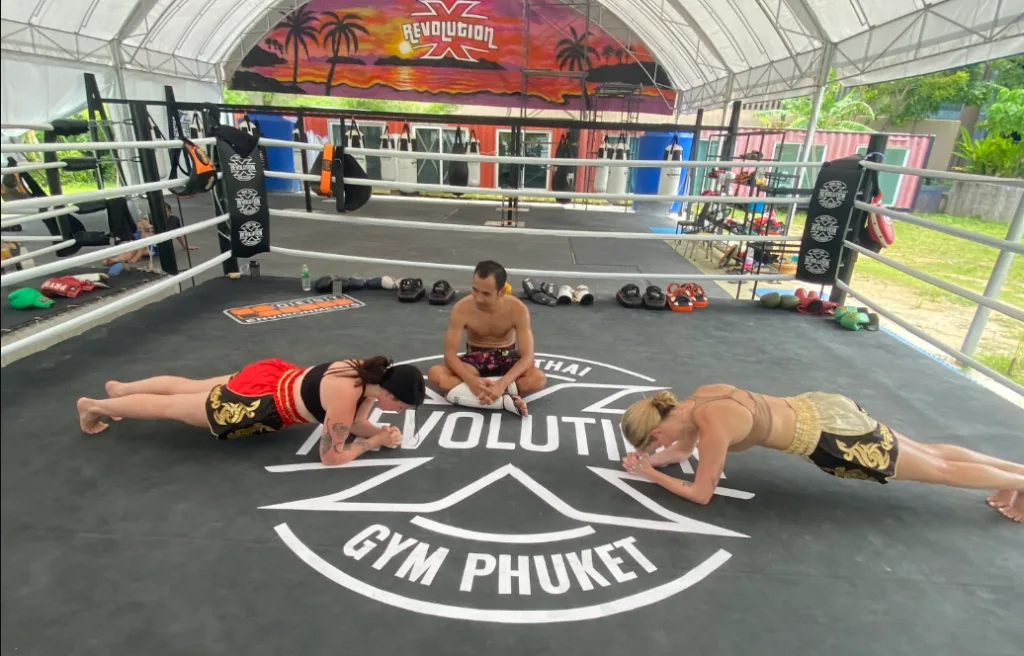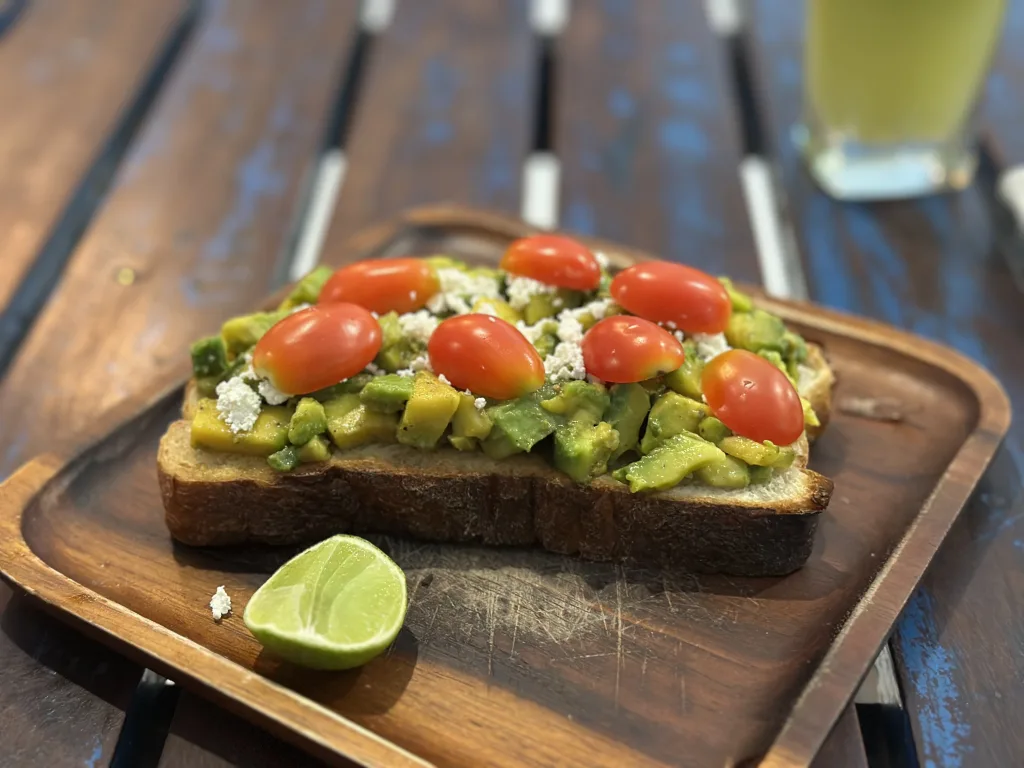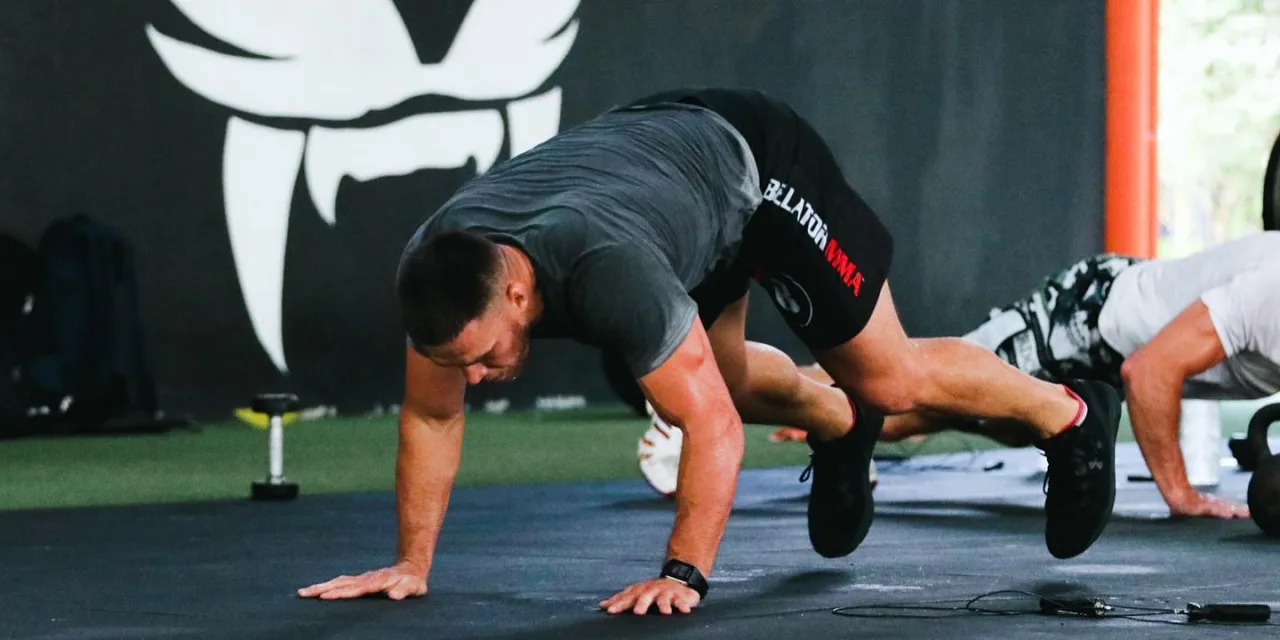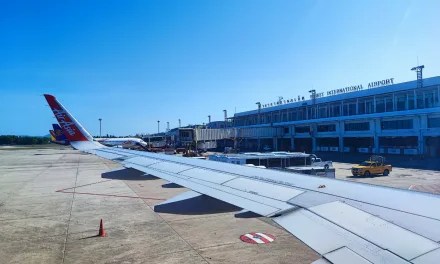Table of Contents
Table of Contents
How to choose the right Muay Thai gym in Thailand — oh, what a minefield.
Do you pick the one with the shiny Instagram? The one your hotel receptionist name-drops? Or the one that smells slightly less like feet?
Let’s be honest: there are loads of Muay Thai gyms in Phuket. Especially down here in the south, where every soi seems to have one — wedged between a coconut stall and a scooter rental.
But here’s the kicker — not all gyms are created equal.
Whether you’re here to smash some pads, shed some lockdown kilos, or chase a fight dream that won’t let go, you need a gym that fits you. Not just your goals, but your vibe. Your limits. Your life.
Let’s break it down, plain and real.
🎯 Know Your Why (Seriously, Ask Yourself First)
Before you wrap your knuckles and run into the nearest ring — pause.
Why are you training Muay Thai?
- To fight? Go hard. Look for fight camps with legit trainers, sparring opportunities, and a ring that actually gets used.
- To lose weight? You’ll want a gym with cardio-focused classes, beginners welcome, no judgement.
- To learn technique? Seek structured classes, clear instruction, and trainers who give individual feedback.
- To stay active on holiday? Then convenience and flexibility might matter more than credentials.
Don’t get swept up in someone else’s path. You don’t need to train like you’re heading to Lumpinee Stadium if you just want to tone up and grab a juice by the beach.
That’s not laziness. That’s being honest.
✨ Vibe Check: Muay Thai Gym Culture is Everything

Here’s the truth most blogs skip: Muay Thai gyms have personalities.
Some are intense, silent, fight-camp environments. Others feel like community centres with kick pads and protein shakes.
When you visit a gym, read the room:
- Is the class size manageable?
- Do trainers seem engaged?
- Are people laughing… or barely breathing?
- Are beginners being helped — or ignored?
If it feels off, it probably is.
For those who want wellness over warfare, see our Phuket spas guide or head straight to Rawai & Nai Harn where vibes lean chill.
🧠 Coach Credibility & Communication Count
Now, just because someone’s fought 200 times doesn’t mean they can teach.
A great Muay Thai trainer in Thailand knows how to scale your training, watch your form, and give real-time feedback — not just bark combos.
What to look for in a coach:
- Adjusts drills to suit your level.
- Watches the room, not their phone.
- Corrects you without humiliating you.
- Can explain technique clearly (even if English isn’t perfect).
Want to know what local trainers wish you’d actually ask? Read our interview with a Phuket Muay Thai coach (coming soon!).
🏠 Facilities, Schedule, and the Crowd (Don’t Ignore These)

Humidity? Brutal. Class overload? Worse.
Pick a gym with:
- Clean mats
- Enough gear
- Cooler morning or sunset sessions
Explore morning classes in areas like Kata and Karon, then reward yourself with a cold coconut and sea breeze.
Need help balancing training with beach time? Try our guide to avoiding burnout in Phuket’s heat (coming soon).
💸 Try Before You Commit (Always)
Drop-ins are your best friend. Take one class, observe the energy.
Ask:
- Can I watch first?
- What’s the structure this week?
- Are there women’s only or beginner classes?
Looking to explore a few in one week? Use our Muay Thai in Phuket: Best for Beginners list (launching soon!) as your roadmap.
📍 Location, Location, Lifestyle
Training’s easier when it fits your life.
Look for gyms near:
- Your home base
- Healthy cafés
- Massage shops or ice baths
- Beaches like Nai Harn or Kata
After class, head to these spots for your real reward: smoothie heaven.
💵 Cost vs. Value
Before you fork out a full month’s rent on that flashy gym with drone footage…
Get clear on:
- Inclusions: gloves? water? private time?
- Perks vs. gimmicks
- Your frequency of training
Want to know if training in Phuket breaks the bank? Check out how cheap Phuket really is before you commit to a package.
🧨 Red Flags to Watch For
Say nope to:
- Trainers scrolling mid-session
- Overpacked classes
- No warm-up or form correction
- Overly aggressive contracts
Also, cross-reference any gym against our local recommendations (launching soon). Sometimes what’s Insta-hot is actually cold soup.
🧘♀️ Muay Thai Is More Than Just Training
Look, you’re not marrying the gym. You’re dating it. You’re testing the fit.
Some gyms feel gritty and raw. Others are clean, cool, and curated.
Want to chill post-training with an ice bath and sunset smoothie? These wellness hubs in Phuket hit different.
Not sure which part of the island to anchor in? Browse our Where to Live in Phuket guide to make your gym commute… less sweaty.
🥗 Fuel Matters: What to Eat When Training Muay Thai in Thailand

Let’s start with the basics.
Muay Thai burns a stupid amount of calories.
And yes — you’re in Thailand. Land of 50-baht fried rice and mango sticky rice on every corner.
But not all food is training food.
If you’re wondering what to eat near your gym, check out our guide to local eats that fuel fighters (dropping soon).
Here’s what works (and what doesn’t):
✅ Eat This:
- Morning: Eggs, fruit, rice, iced coffee (welcome to Thailand).
- Lunch: Stir-fried chicken and veg, som tam, brown rice.
- Snack: Coconut water, bananas, boiled eggs, protein shake.
- Dinner: Light. Like Tom Yum soup or grilled fish and veg.
❌ Skip This (before training):
- Anything too oily (bye, deep-fried pork).
- Creamy curries before sparring = mistakes were made.
- Spicy stuff before morning runs. Just don’t.
Want specifics? We’ve mapped out where to eat near Phuket gyms — by budget, vibe, and distance from class.
🔥 Burnout Is Real: How to Avoid Overtraining in Thai Heat
The Phuket sun doesn’t mess around.
Neither does two-a-day training with no breaks.
Even the pros rest.
Here’s how to train smart, not dead:
- Hydrate like crazy. Electrolytes are your new best friend. Water alone won’t cut it.
- Train early or late. Midday classes? Rookie move unless you enjoy fainting.
- Take rest days. Thai massage or ice baths in Phuket are not just for influencers.
- Watch your weight. You’re not fighting. Eat. Sleep. You need energy more than abs.
Training Muay Thai in Thailand should build you, not break you.
Need help pacing yourself? Our no-burnout Muay Thai guide (coming soon) has real tips, from real trainers.
🧳 Short-Term vs Long-Term Training Plans in Thailand
Are you in Phuket for:
- A week?
- A month?
- Or thinking: what if I stayed longer…?
Your gym choice changes depending on your timeline.
If You’re Here Short-Term:
- Go flexible: day or weekly passes.
- Stick to gyms close to your accommodation.
- Combine with some fun: snorkelling, beach clubs, maybe a cheeky Muay Thai show.
If You’re Staying a While:
- Ask for custom packages. Long stays = better deals.
- Invest in your own gear.
- Consider gym + accommodation bundles (popular in Chalong and Rawai).
And yeah — consider switching it up. One gym for technique. Another for sparring. One for morning runs near Nai Harn lake.
👟 The Training Gear No One Tells You to Pack
Spoiler: you don’t need 3 pairs of twins gloves.
But you do need this:
- Hand wraps (2–3 pairs, they get gross fast)
- Quick-dry clothes (humidity is real)
- Flip flops (trainers = overkill)
- Muscle rub (your knees will thank you)
- Reusable water bottle (iced refill stations everywhere)
For a complete checklist, bookmark our What to Pack for Muay Thai in Thailand.
✈️ Flying In Just to Train? What You Need to Know
More and more folks are flying to Thailand for one thing: Muay Thai immersion.
Whether it’s from Bali or Berlin, here’s what’s handy:
- Fly into Phuket International Airport (HKT) — budget airlines galore.
- Stay in Chalong, Rawai, Nai Harn — these are training hubs.
- Book airport transfers in advance — especially if you’re arriving with gloves and shin guards.
- Have travel insurance that covers contact sports. Basic plans usually don’t.
Not sure where to stay that won’t blow your baht? Try our Where to Live in Phuket guide.
🏖️ Weekend Recovery: Where to Chill (Without Losing Gains)
Rest days don’t mean bingeing Netflix in a fan room.
This is Phuket. Go explore.
Here’s where fighters go to recover:
- Nai Harn Beach – calm, local, clean.
- Ao Sane – hidden snorkel spot near Rawai.
- Cape Panwa – quiet, shaded, good for reading and thinking about elbow technique.
- Top Spas in Phuket – because honestly, you earned it.
For a full-day plan, check our top day trips from Phuket — tailored for sore legs.
🙋♀️ FAQs: People Always Ask…
How much does Muay Thai training cost in Thailand?
Refer to our Phuket cost of living guide for deeper breakdowns.
Where do families train together?
Check out Top Kids Activities in Phuket — many gyms listed have family sessions.
Need to unwind after training?
Browse Best Day Spas in Phuket or Where to Get a Real Thai Massage.
Can I spar as a beginner in Thailand?
Usually not right away — and that’s a good thing. Train first, earn the respect, then ask. Start slow, with light drills.
Are Muay Thai gyms open year-round?
Yes. Rainy season = fewer tourists, more personal attention. Check out what to expect during rainy season in Phuket.
What if I want to fight in Thailand?
Tell your trainer early. Some gyms will build a plan around it. Others won’t offer fights unless you’re part of their camp. It’s a relationship, not a request.
Is it safe to train solo as a woman?
Generally yes. But always choose reputable gyms, check reviews, and don’t tolerate creepy behaviour — on or off the mats. Phuket for solo travellers is a must-read too.
🔗 Bonus Reading: Keep Exploring
- What to Pack for Your First Muay Thai Class in Thailand (gear tips)
- Muay Thai vs. Western Boxing: Which One’s Right for You? (coming soon)
- Where to Eat After Training: Local Fuel for Fighters (coming soon)
- Living in Phuket (category link)
How to choose the right Muay Thai gym in Thailand comes down to one thing: showing up, feeling good, and finding your fight — whatever that looks like.
Need help finding your spot? Drop a comment or check out our full Muay Thai in Phuket hub for fresh listings and local tips.















